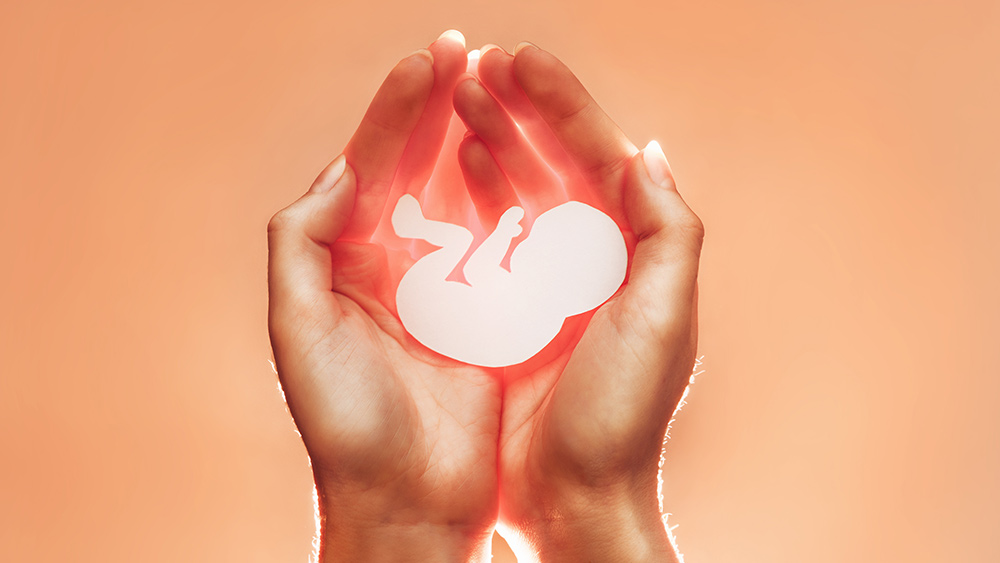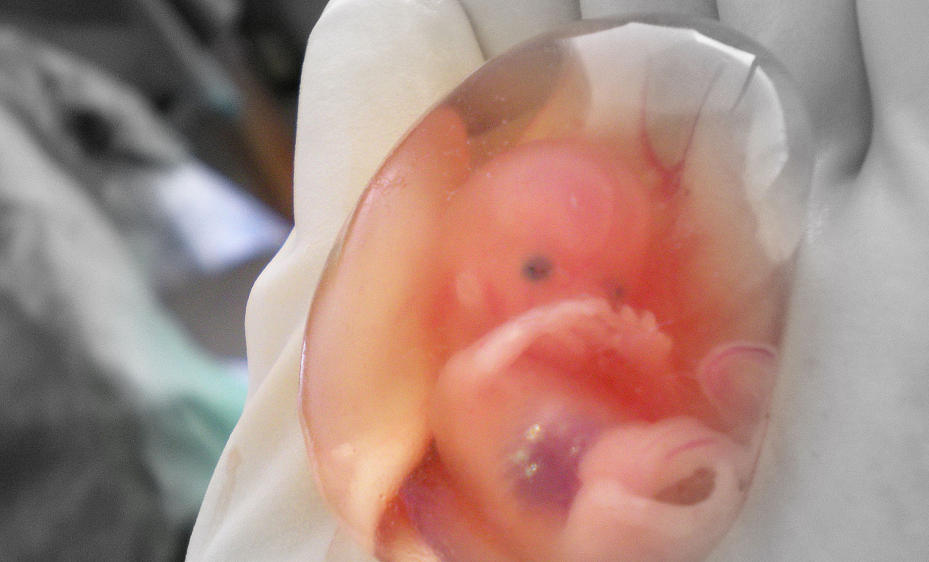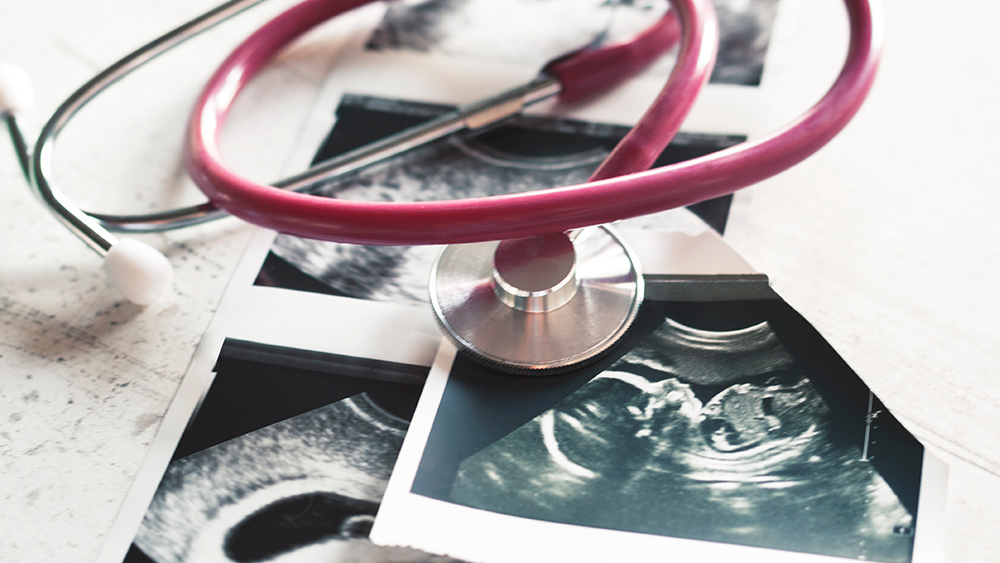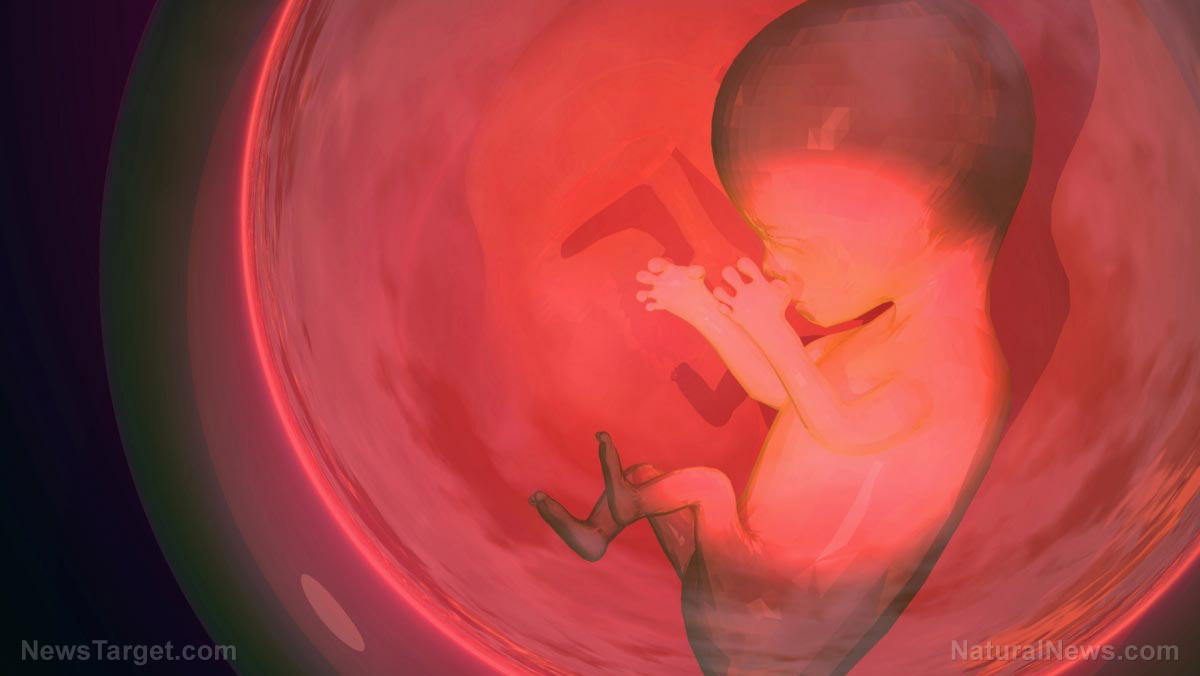
As Republicans and Democrats argue about the future of abortion and human rights, there exists a force of evil far greater in scope, threatening the unborn and the generations to come. This force is stealthily destroying the fertility of an entire generation and spontaneously aborting the next generation -- without humanity’s consent.
A historic reduction in birth rates is occurring around the world. Taiwan, Sweden, the UK, the US and Germany are all reporting an improbable drop-off in their country’s respective birth rates. In the first quarter of 2022, Germany’s birth rate consistently fell by an improbable 11 percent!
Taiwan’s birth rate also saw an improbable 27.66% drop-off in June 2022. Something catastrophic is taking place, threatening human reproductive organs around the globe. Are people deciding not to conceive in record numbers, or is something more sinister keeping pregnancies from coming to term?
There is a 1 in 12.5 billion chance birth rates would have randomly fallen at such a rate
Germany just released its birth data for April 2022, and the depopulation trend continues unabated there. Germany’s birth rate has fallen an improbable 11 percent across the first four months of 2022. This 11 percent drop is compared to the seven-year average and represents a 6.6 sigma event. This means that there is a 1 in a 12.5 billion chance that this drop-off in births would happen randomly. The drop-off in birth rate is even greater (13 percent) when it’s compared to the 2021 statistics alone. The total number of live births in April of 2021 was 63,601. The previous three-year average hovered around 62,000 live births throughout the month of April. In April 2022, the live births dropped significantly, to 55,994.
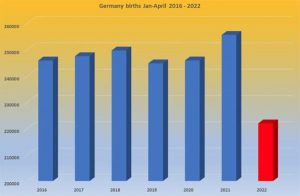
These statistics could mean several things. Conception across Germany may have dramatically fallen from March to June 2021, when the covid-19 vaccines were rolled out en masse. Miscarriages or ectopic pregnancies could have occurred in greater numbers during the vaccine rollout. Whether fewer people were deciding to conceive or whether fewer pregnancies were making it full term, the end result is the same: depopulation is happening today. If the correlation between covid-19 vaccine programs and infertility is true, the appalling drop-off in births will continue in the months ahead.
There is already evidence of this for the month of June. A further drop-off in birth rate is already being observed in Taiwan, with their June 2022 birth rate falling by 27.66% compared to the previous year, same time. The May drop-off in births between 2021 and 2022 in Taiwan was 23.34%, so the situation is getting worse there.
In Great Britain, the corporate media is celebrating the reduction in live births. The iNews channel published an opinion piece on July 7, 2022, titled, “A decline in birth rates is a cause for celebration – it shows how far we have come.” For years, schoolchildren have been taught that the world is overpopulated, so articles like these are expected to show up more. Just as vaccine side effects and sudden adult death syndrome were normalized in 2021, cratering birth rates will also be normalized in 2022 and beyond.
Vaccine-induced spike proteins proliferate in reproductive organs, and shed to others through inhalation and skin contact
During the clinical trials for the BioNTech/Pfizer mRNA vaccine, scientists warned about “exposure during pregnancy.” The vaccinated study participants were told to report any secondary environmental exposure to pregnant women or breastfeeding mothers. This included exposure “to the study intervention by inhalation or skin contact” especially at time of conception. Basically, Pfizer warned that a pregnant woman who is unvaccinated could also pick up the spike proteins from her doctor/midwife or another family member who was vaccinated.
“A male family member or healthcare provider who has been exposed to the study intervention by inhalation or skin contact then exposes his female partner prior to or around the time of conception," the documents state. With evidence of vaccine-induced spike proteins proliferating to various organs in the body, the threat to reproductive organs becomes magnified. Moreover, this proliferation of spike proteins and reverse transcription of SARS-CoV-2 RNA into the genome also makes the threat of viral shedding even greater than previously imagined.
Today, the covid-19 vaccine may be the greatest threat to the unborn, whether the mother is vaccinated or is exposed to the recently vaccinated. The vaccines' implications for infertility affects both males and females, because the engineered spike protein is expressed in both the testes and the placenta.
Sources include:
DPBH.gov [PDF]
21A86.com [PDF]
Please contact us for more information.















